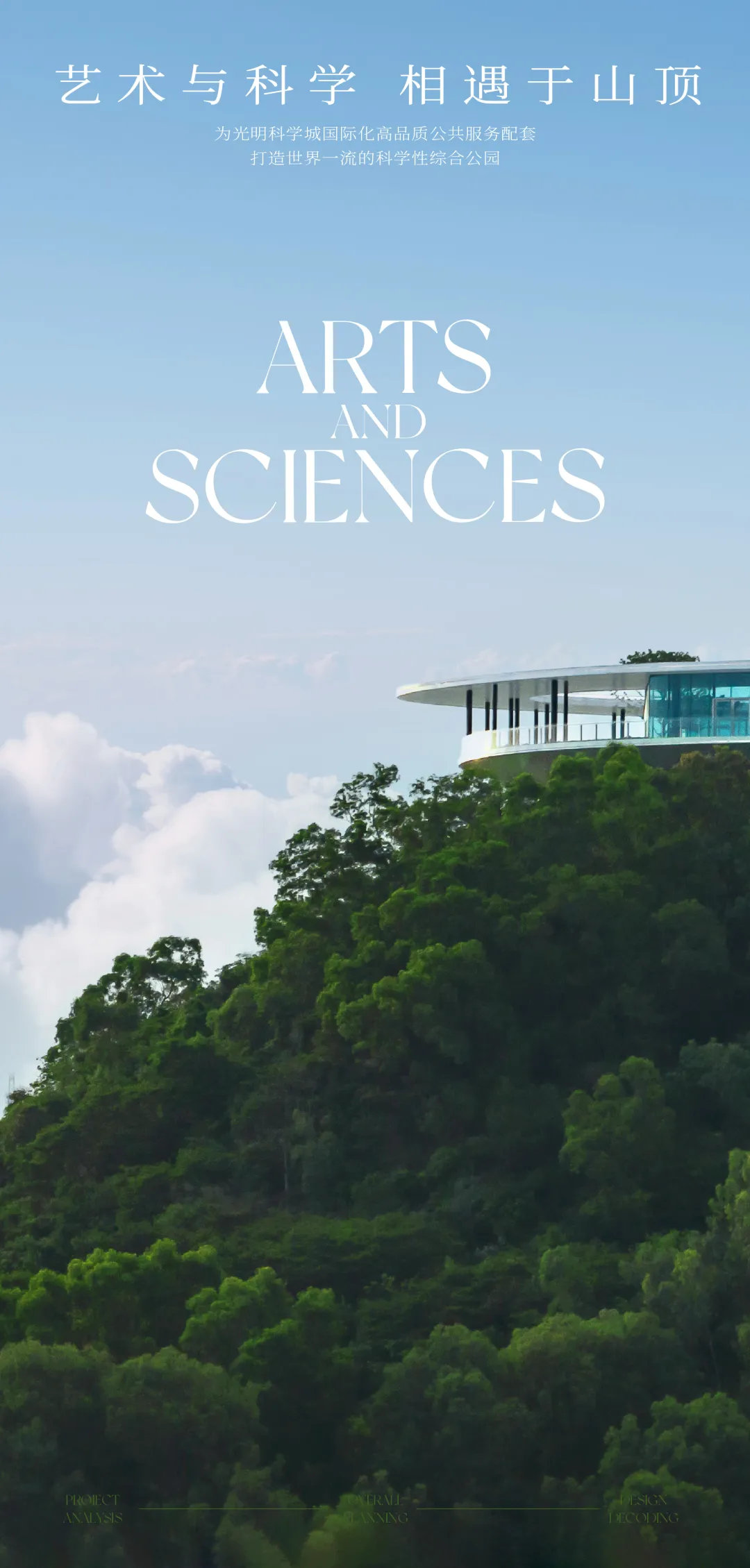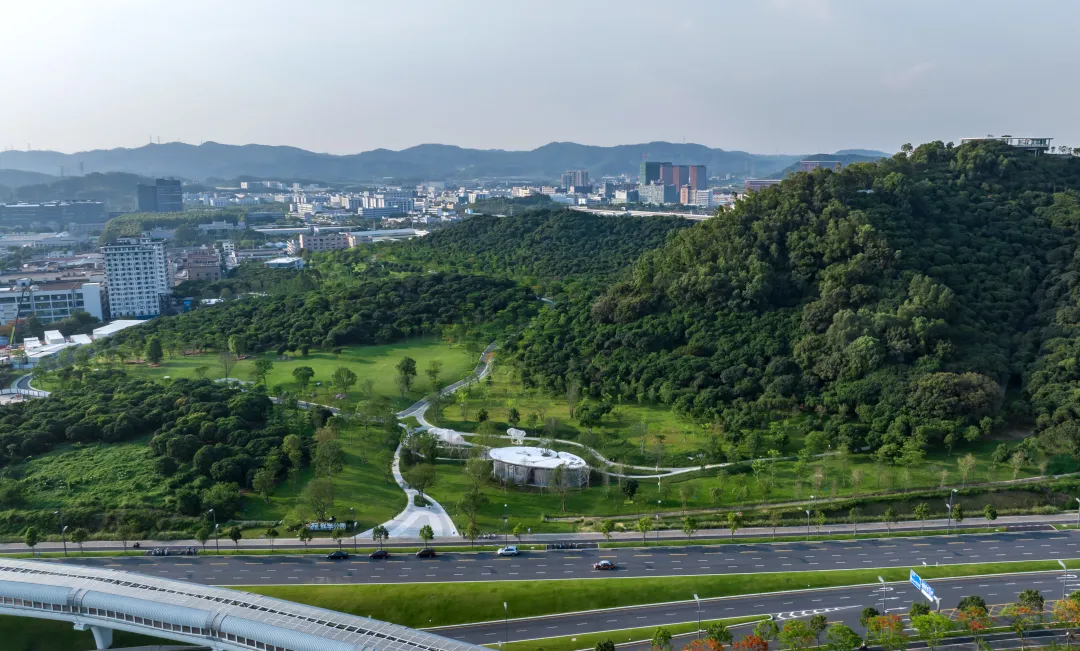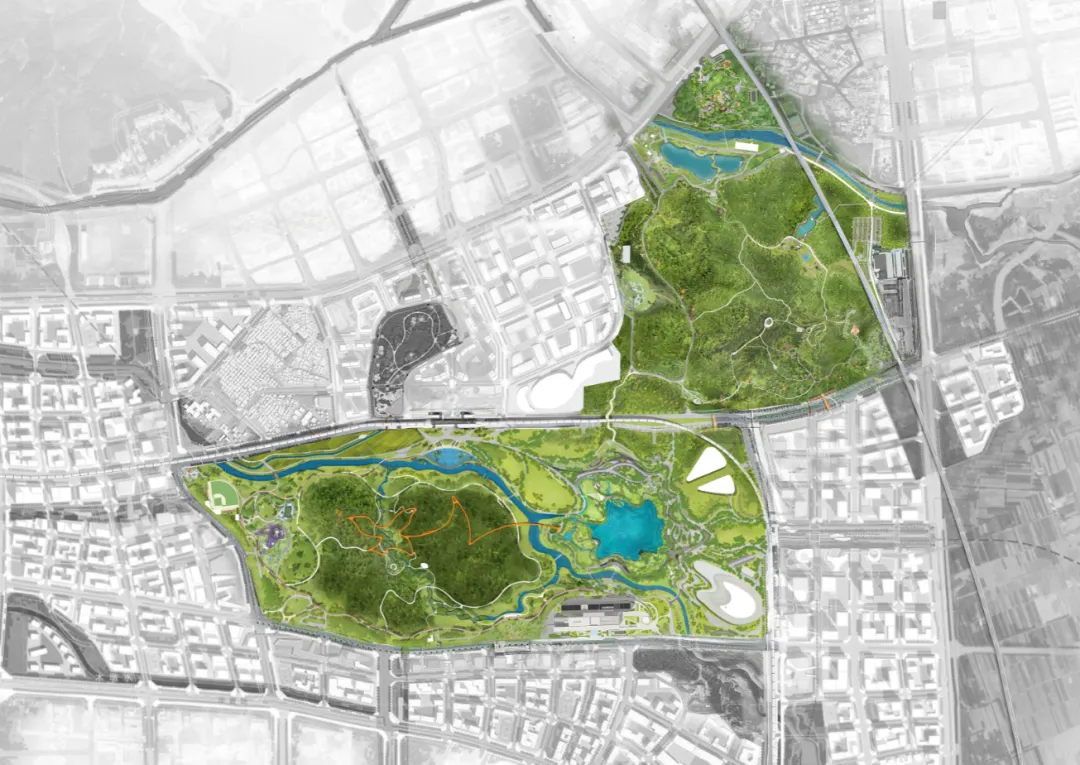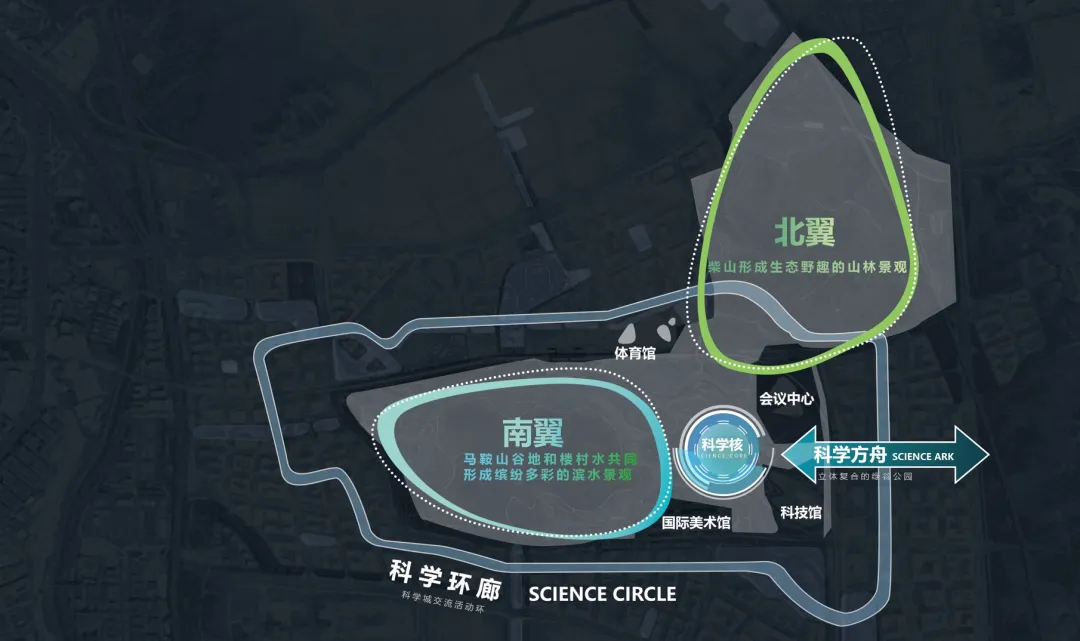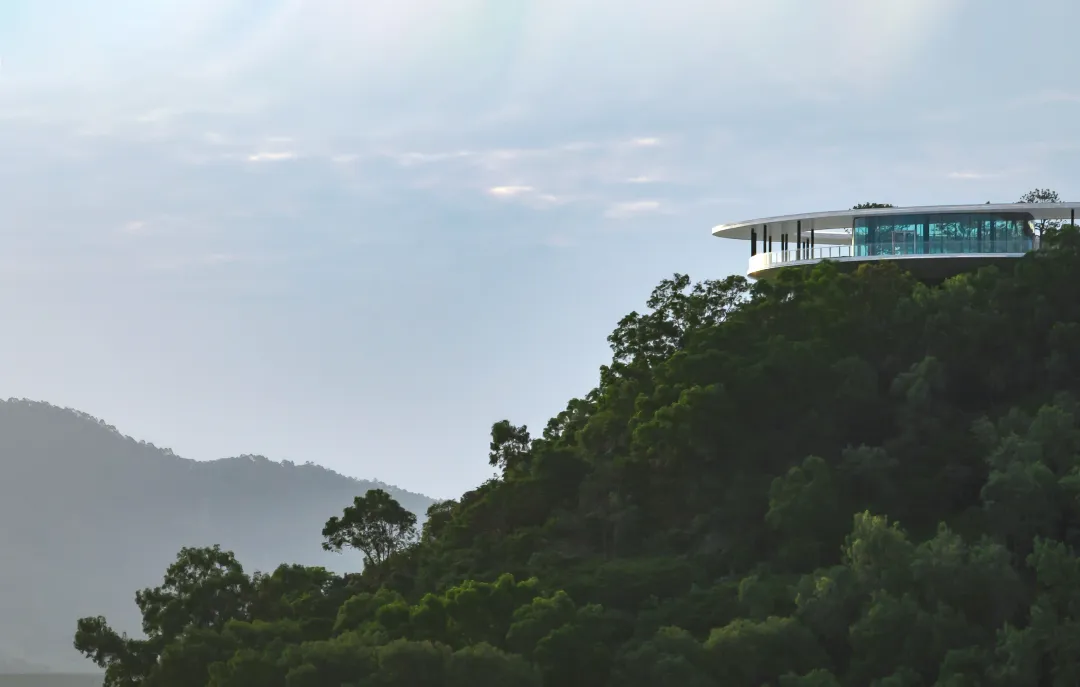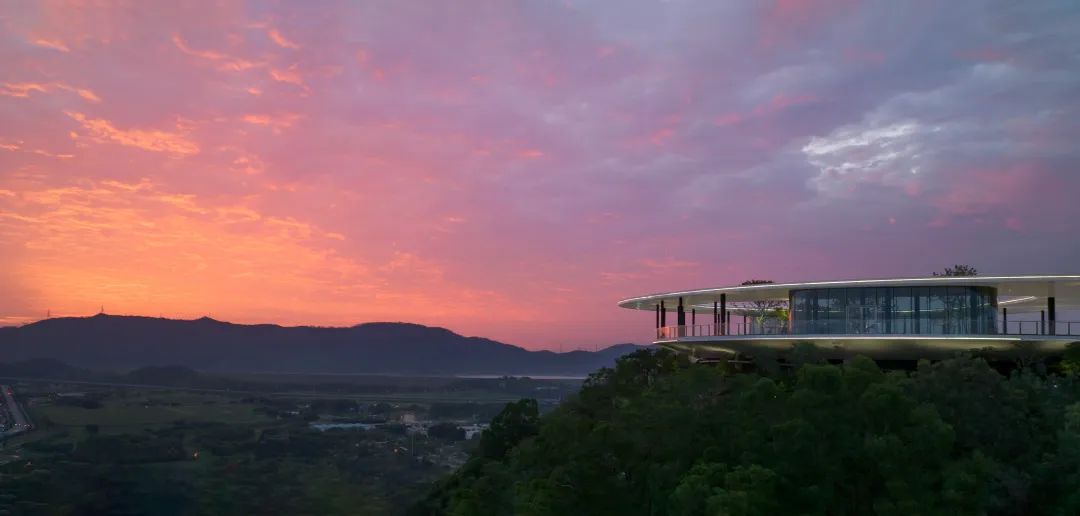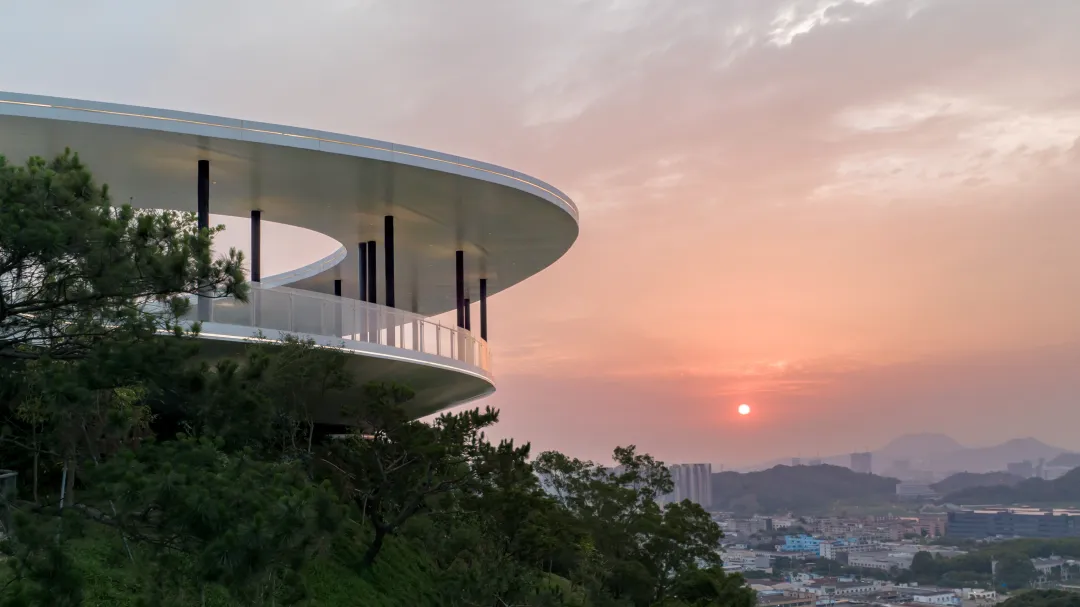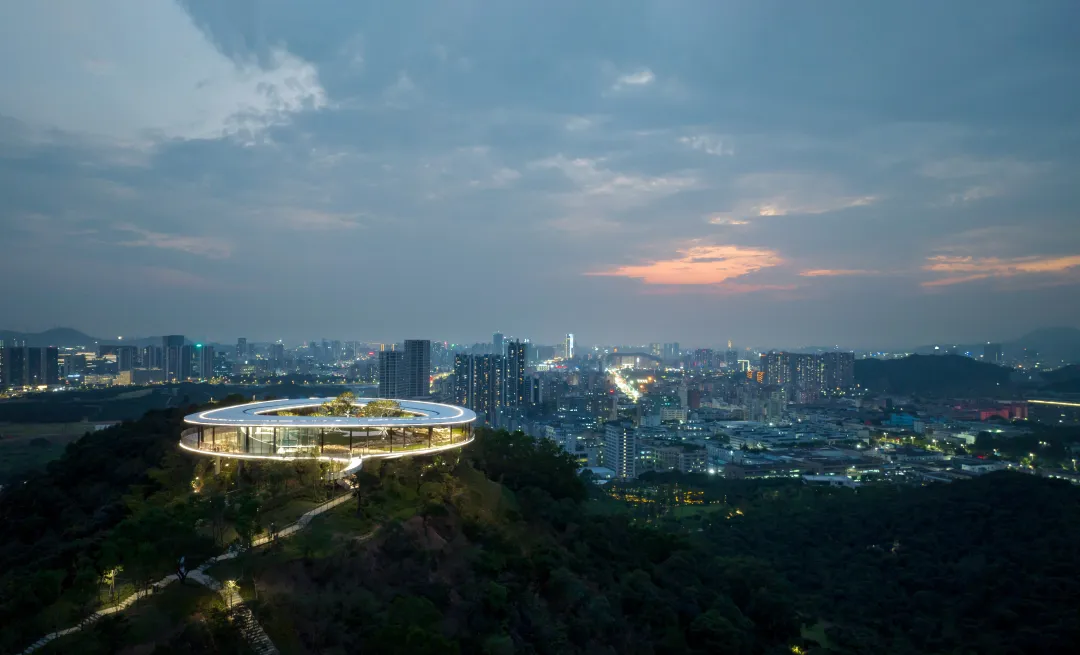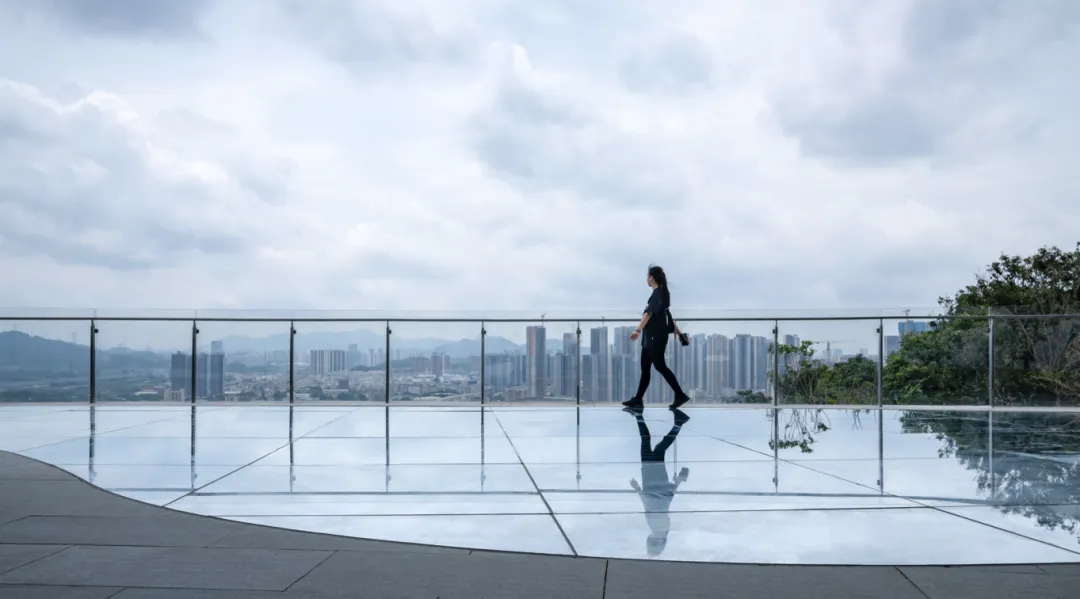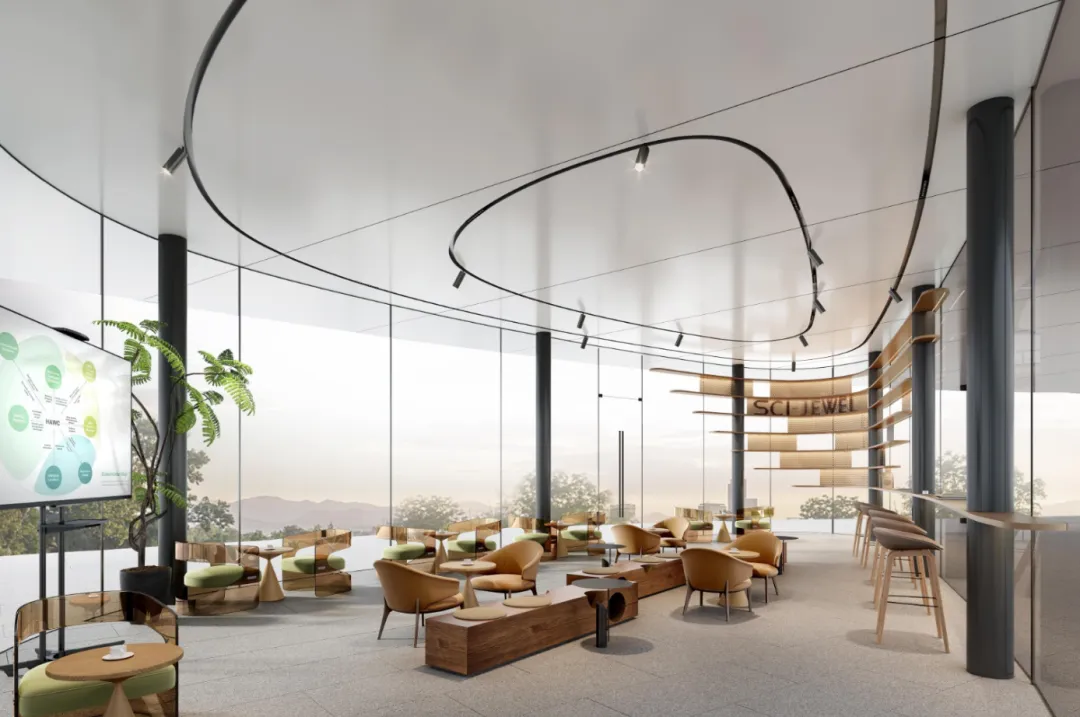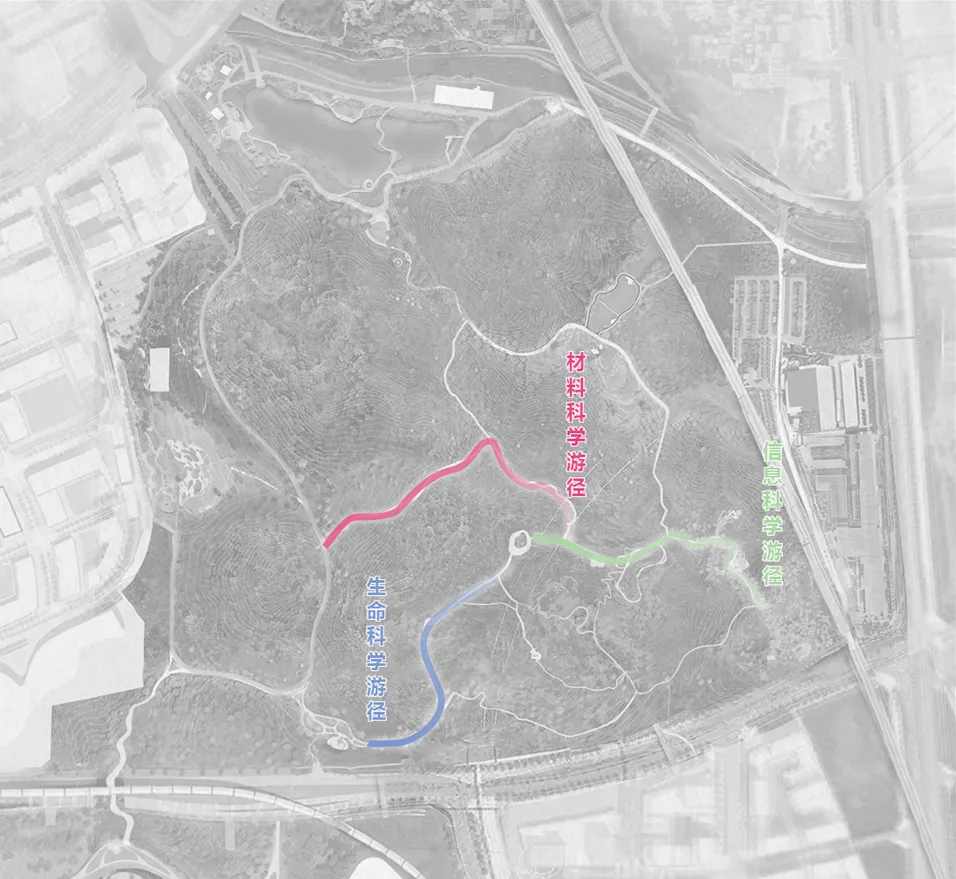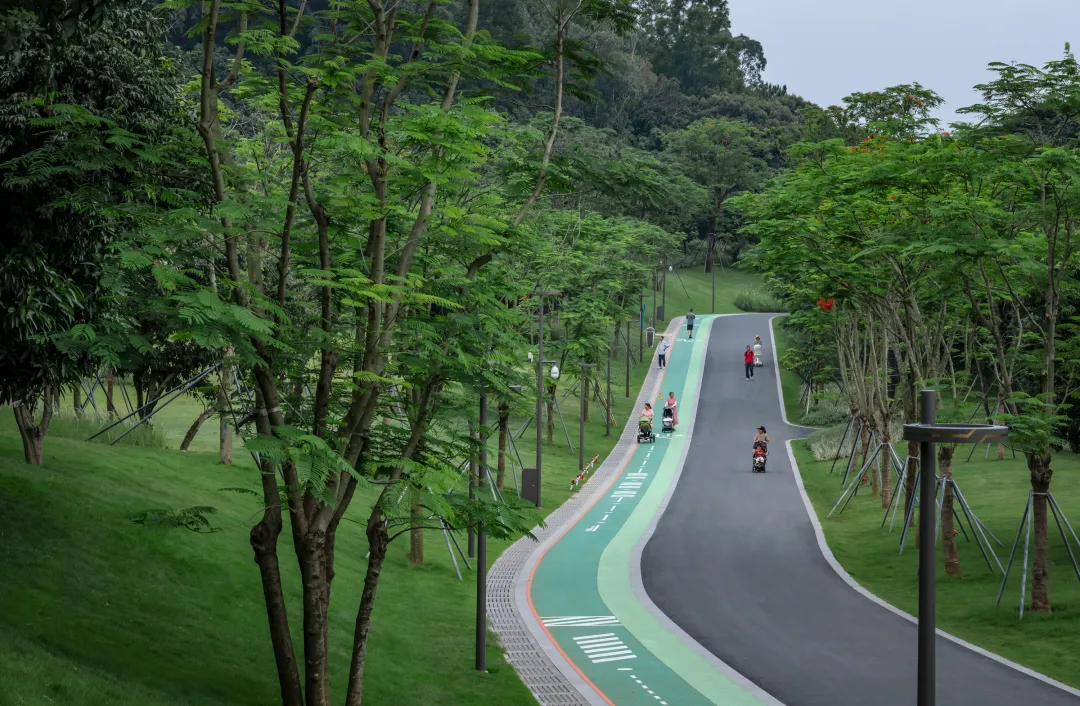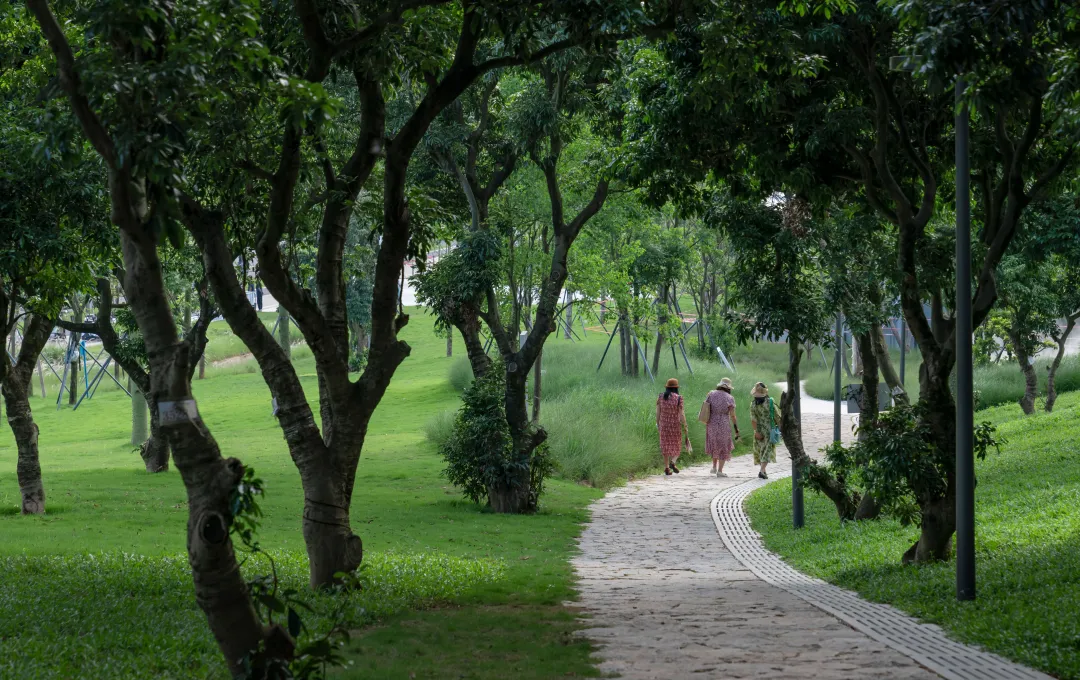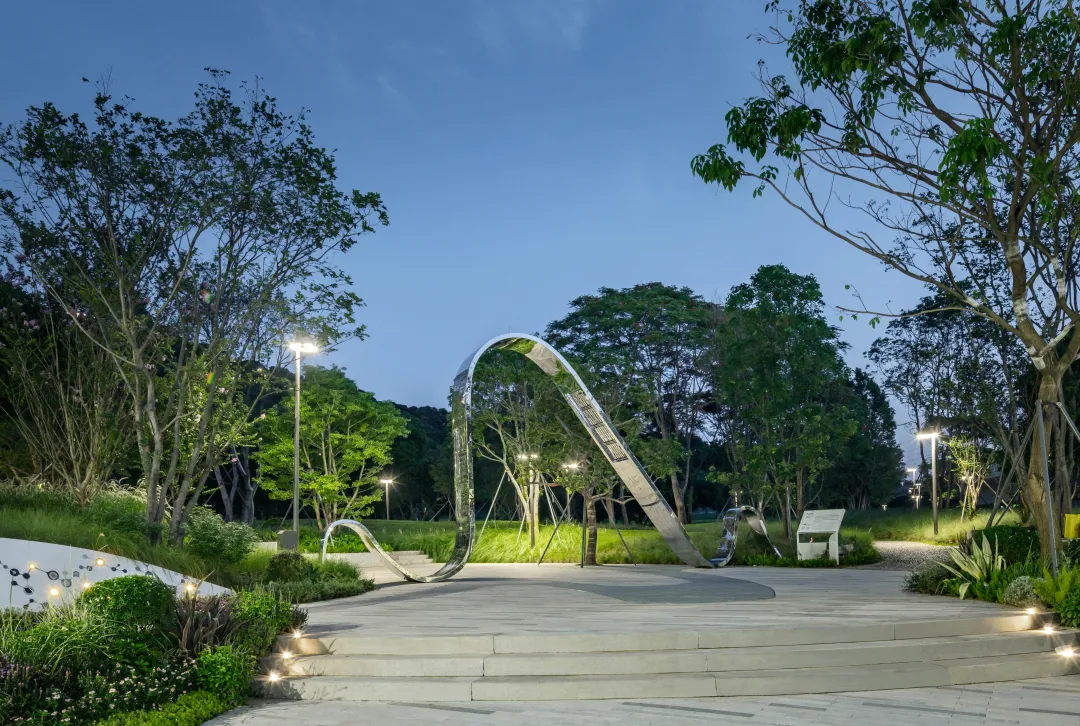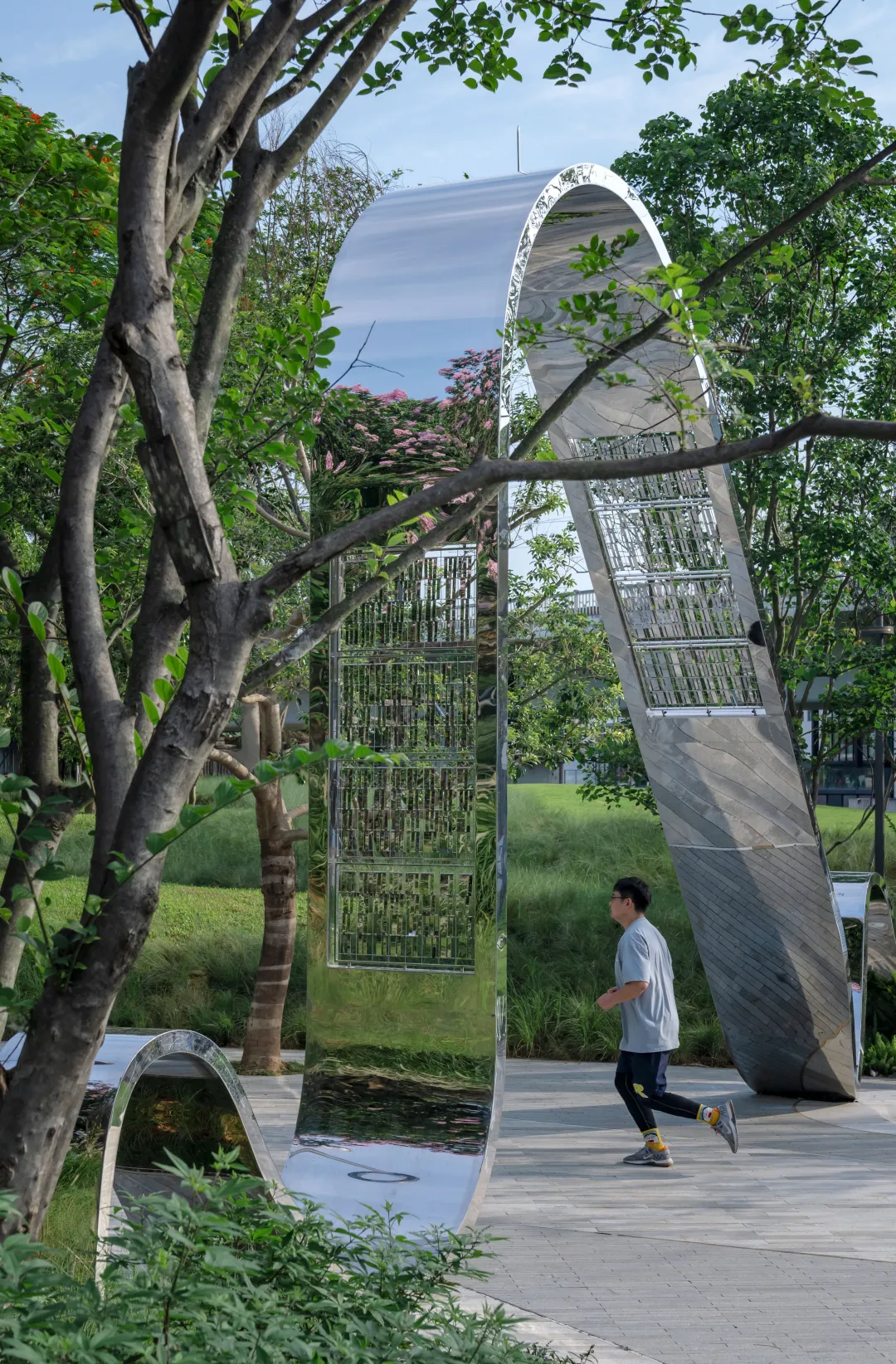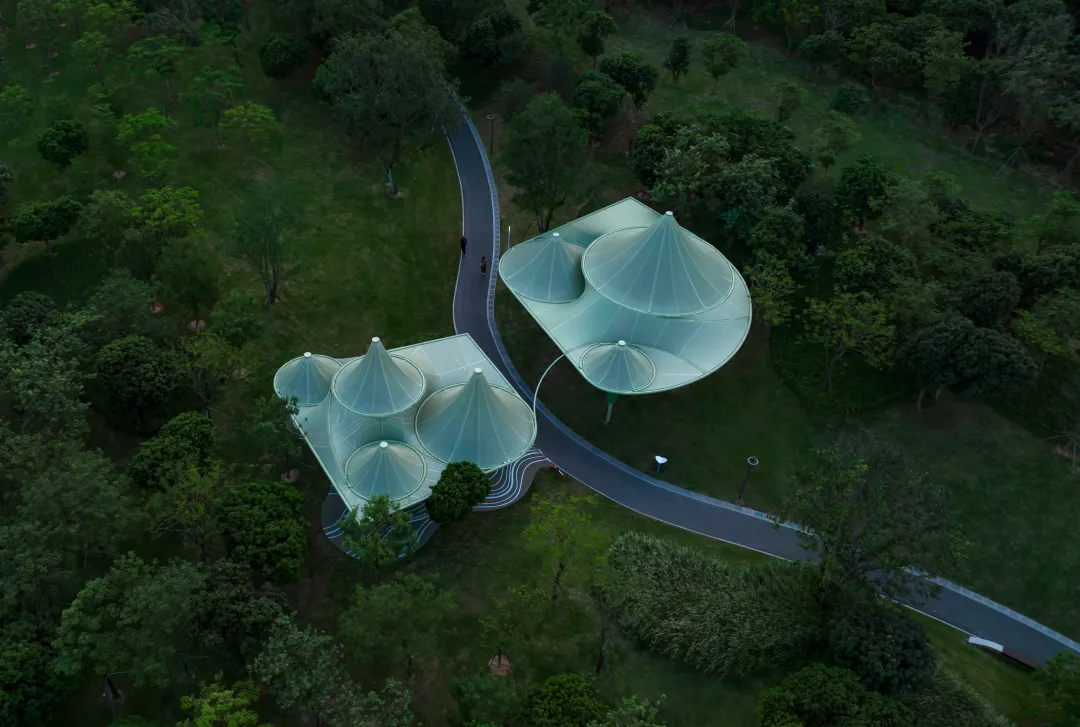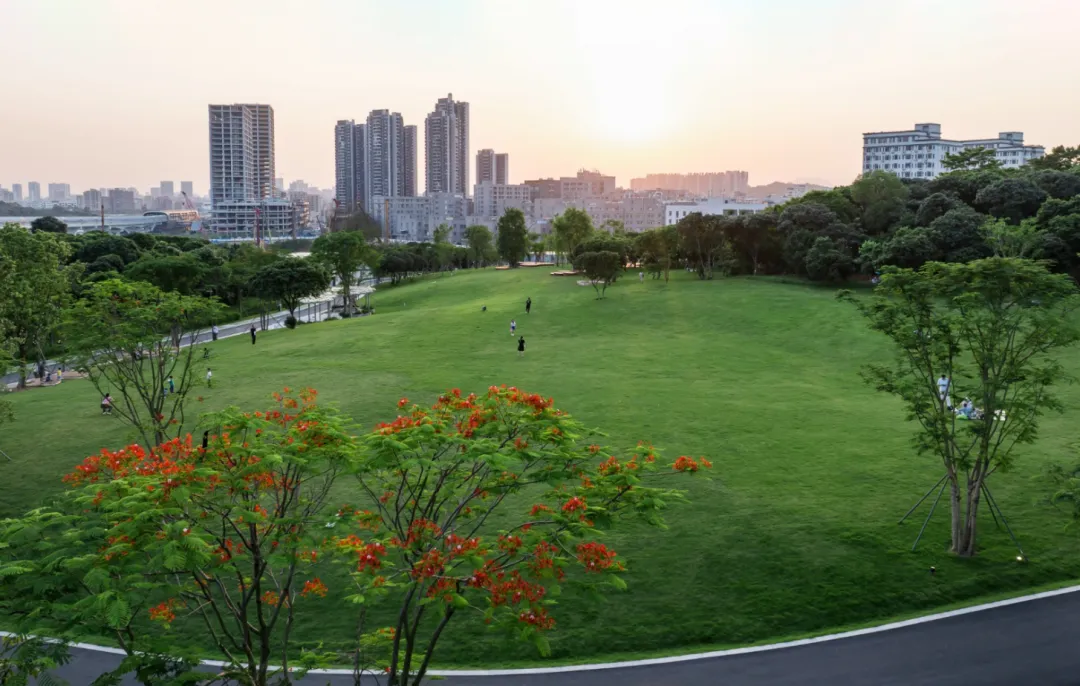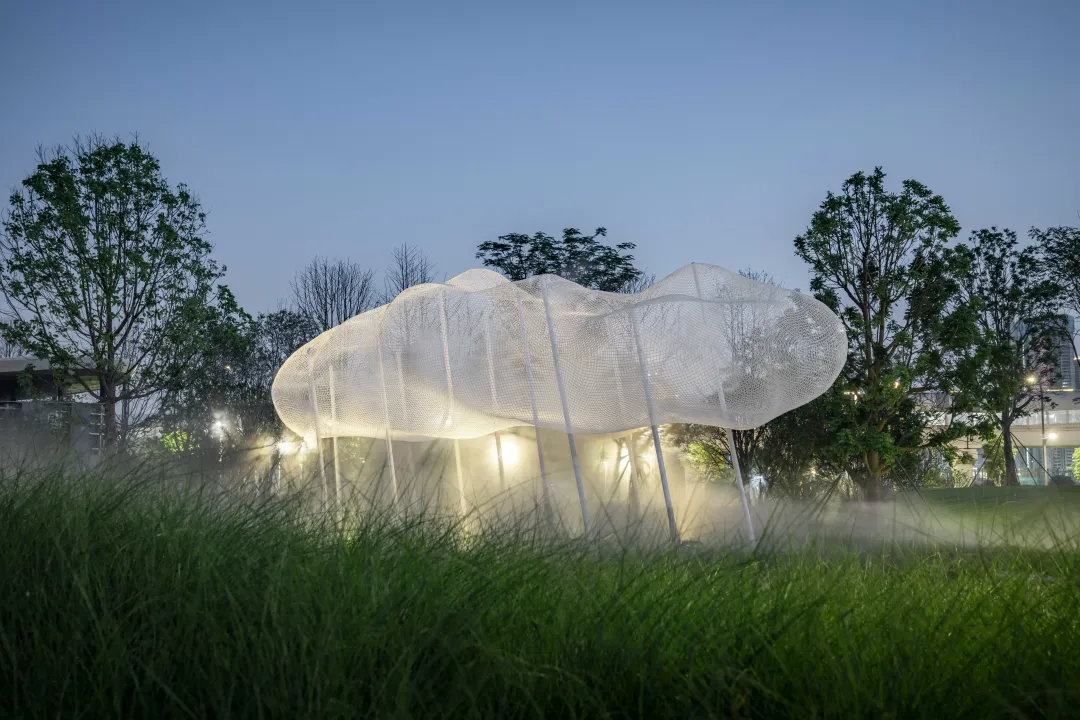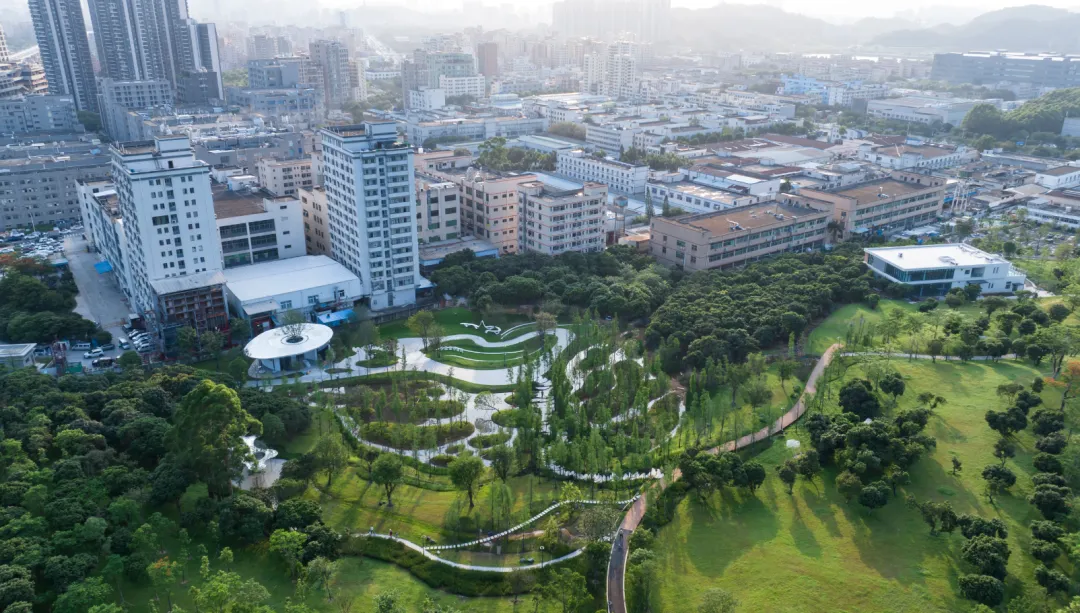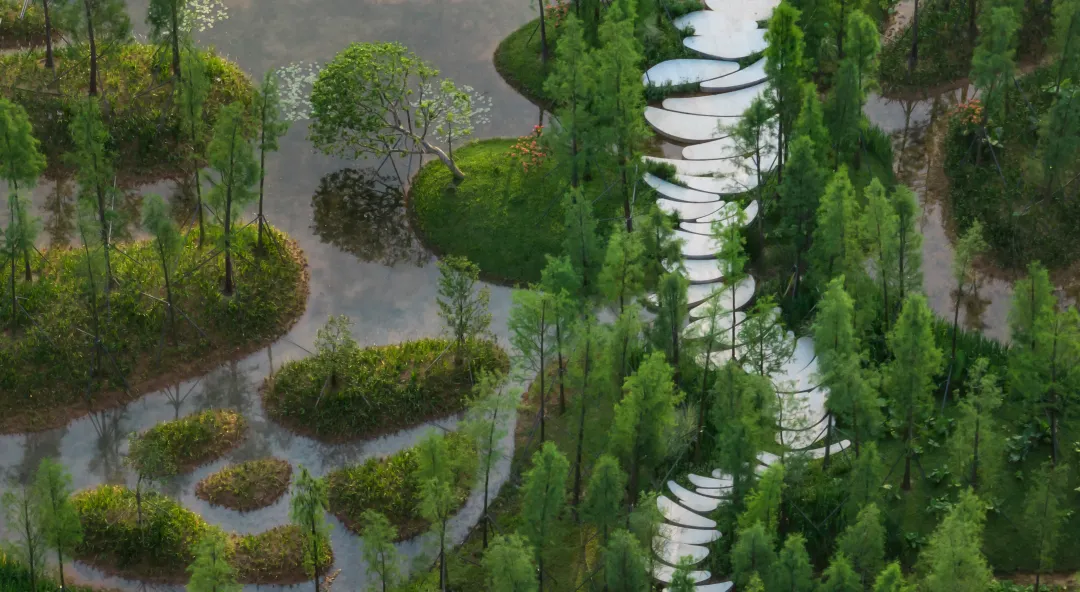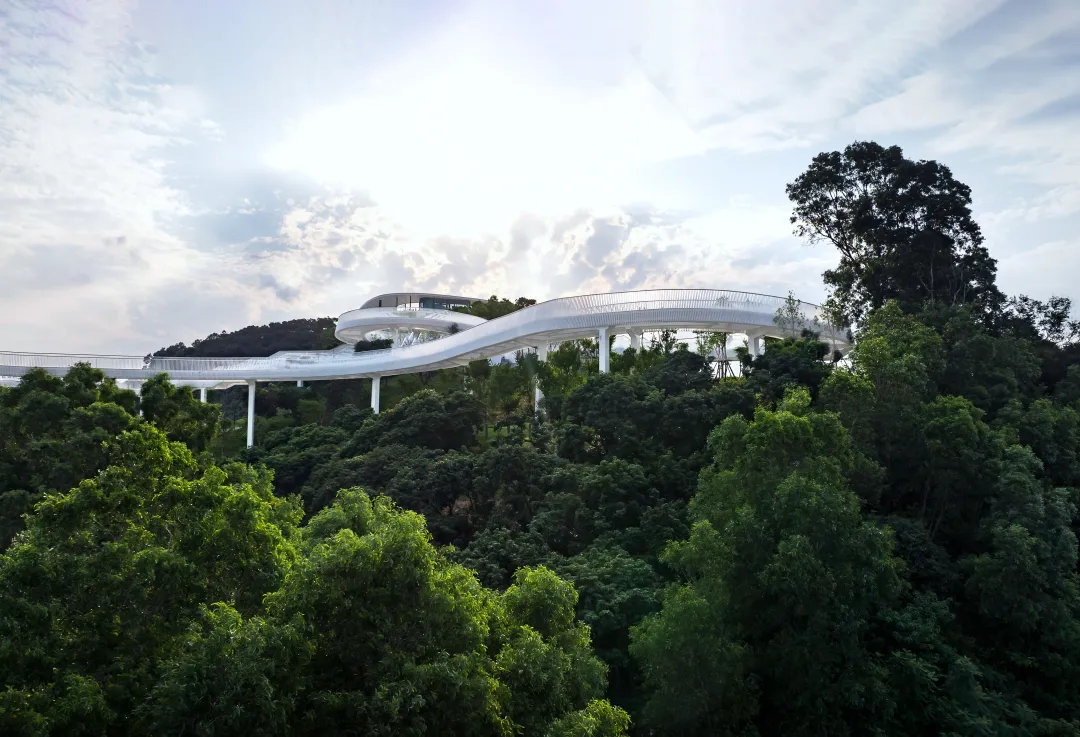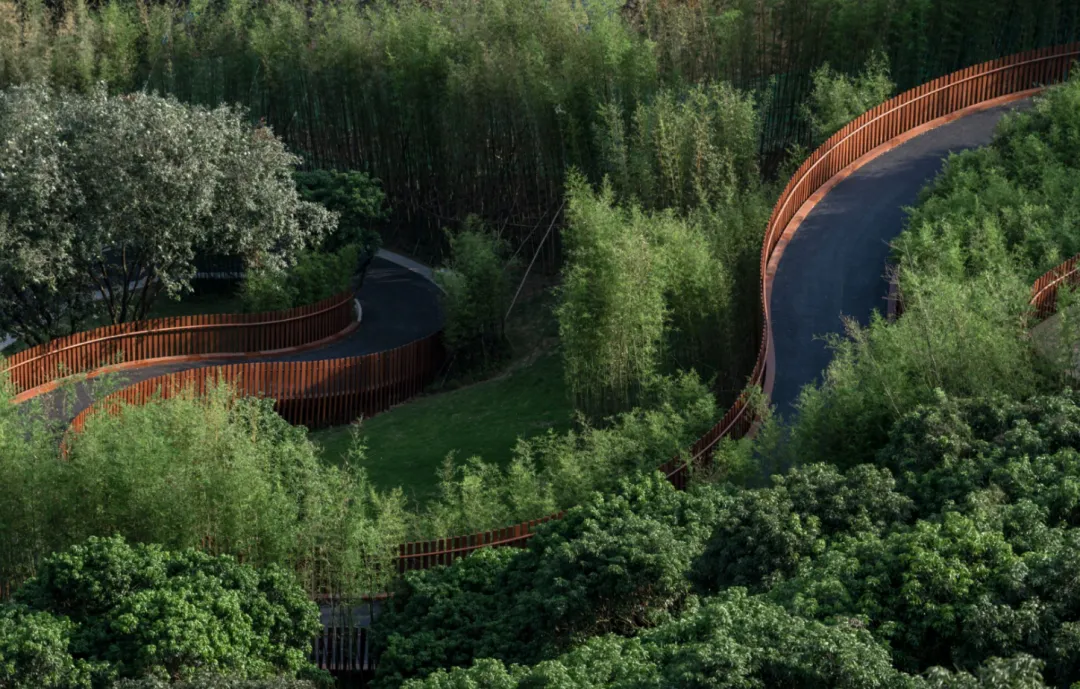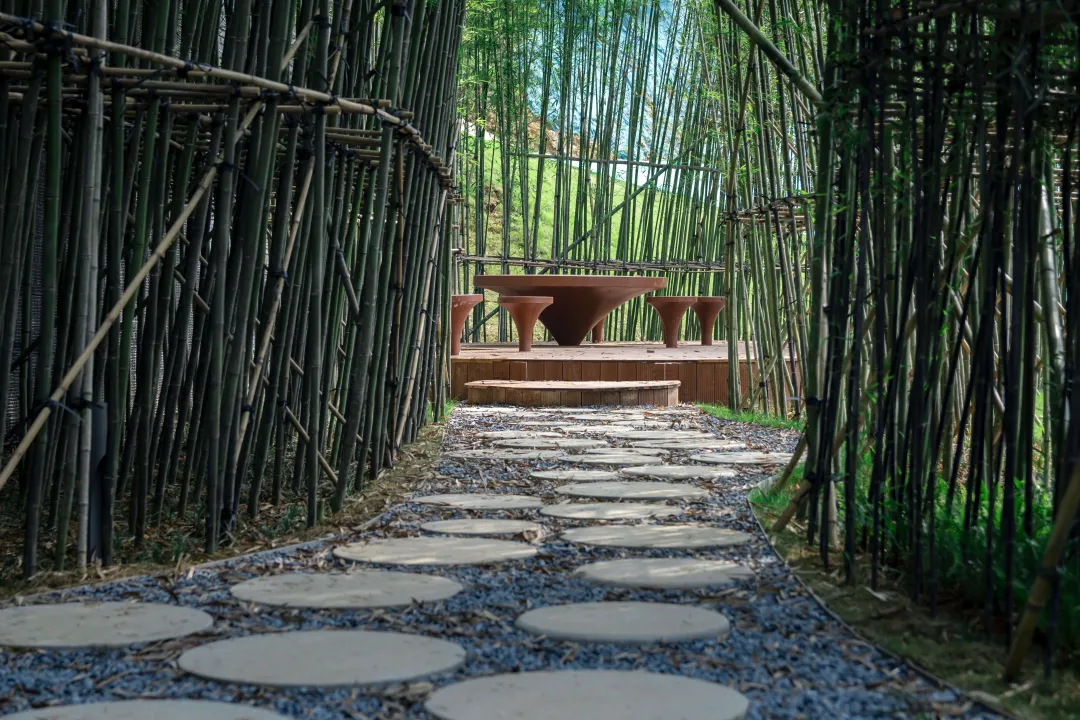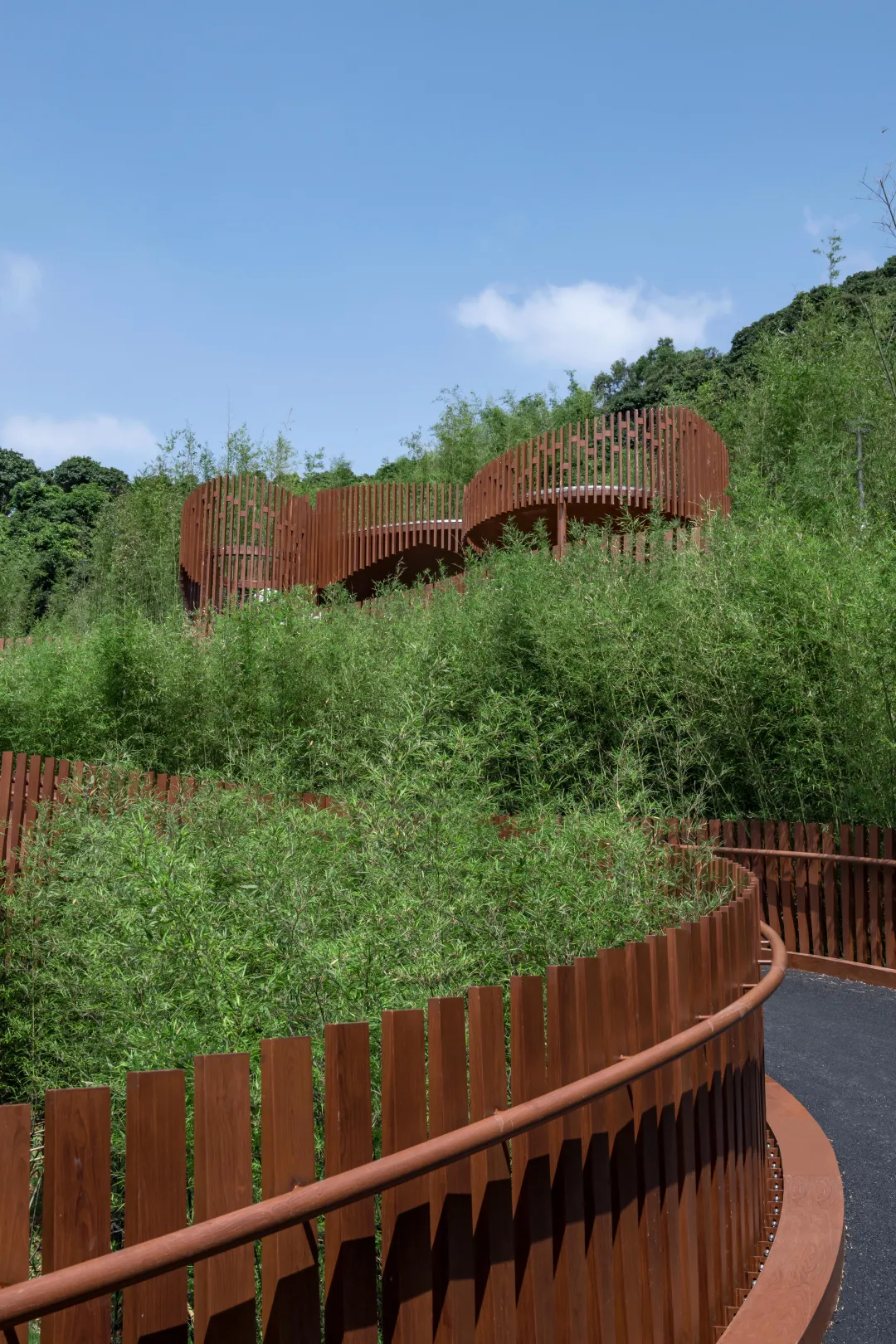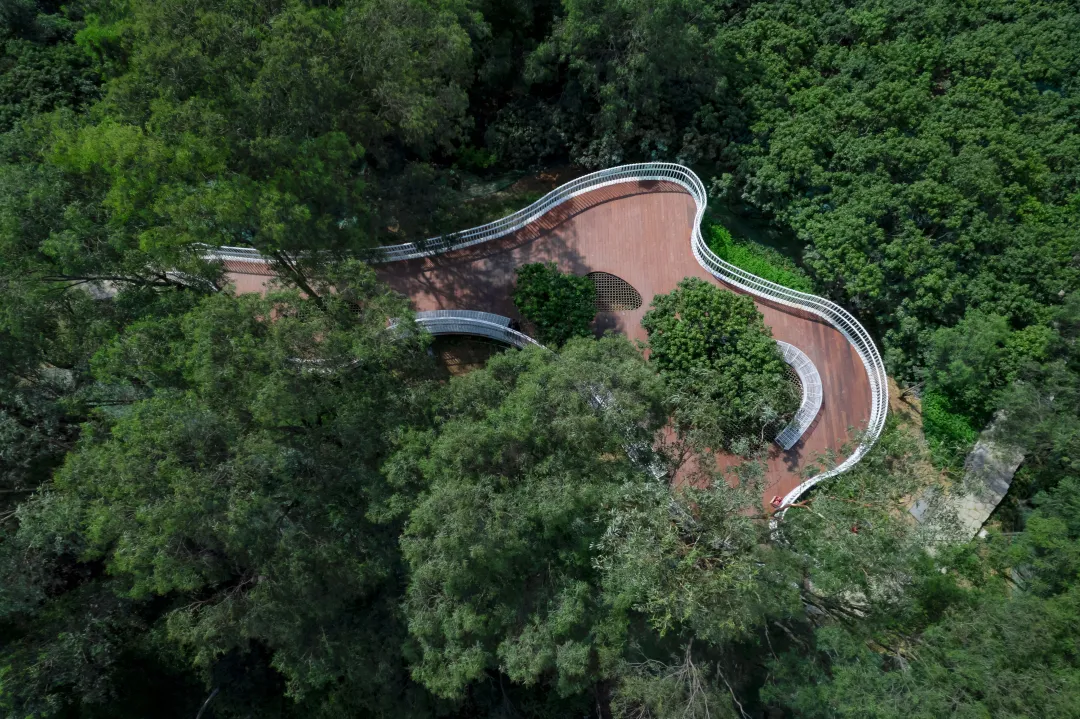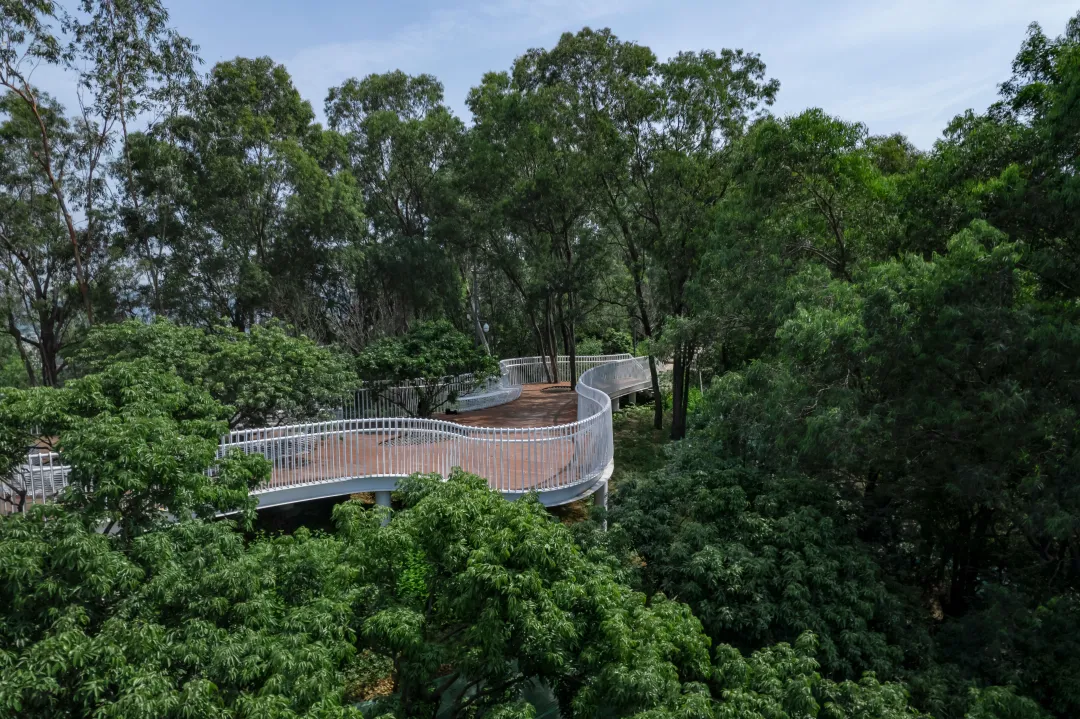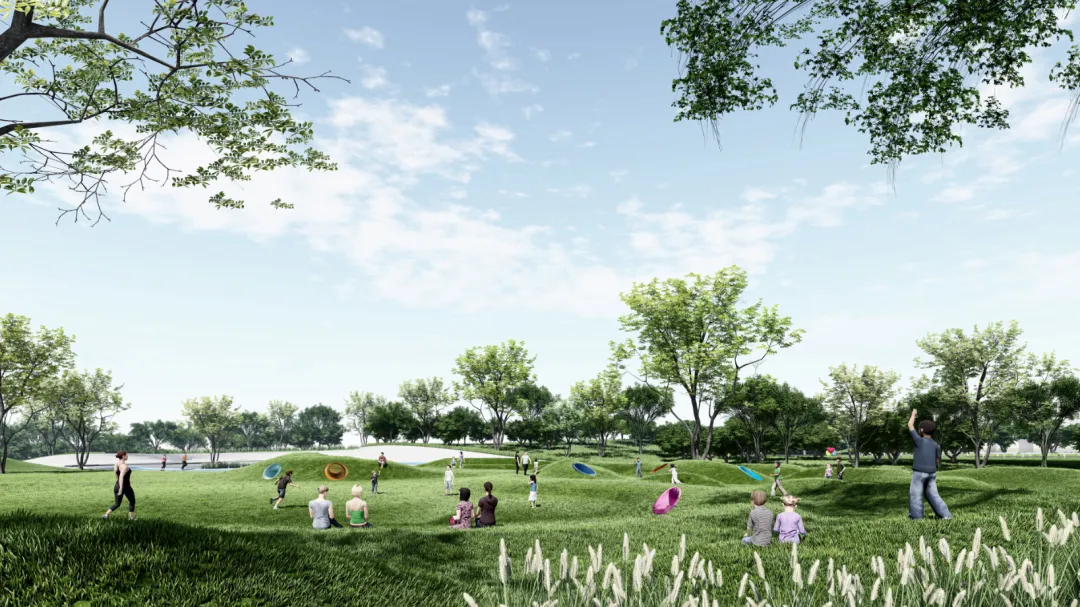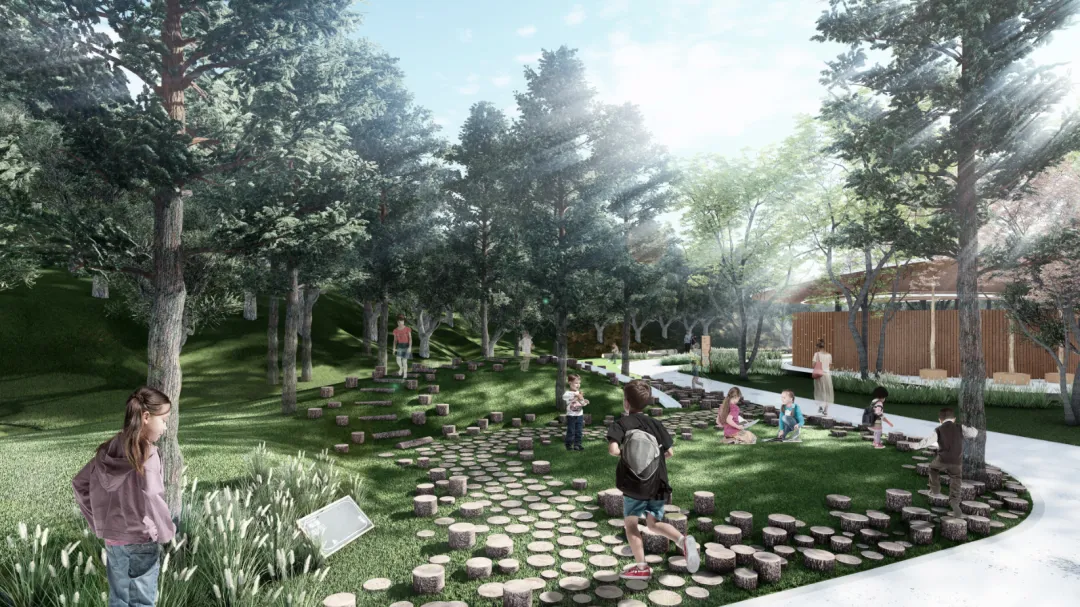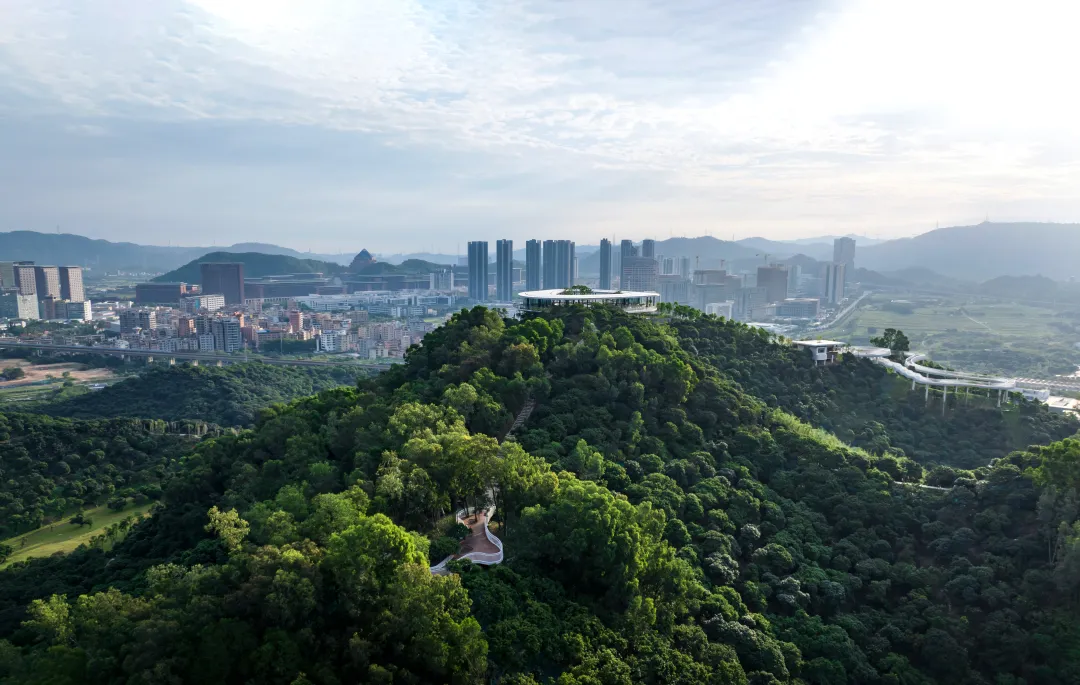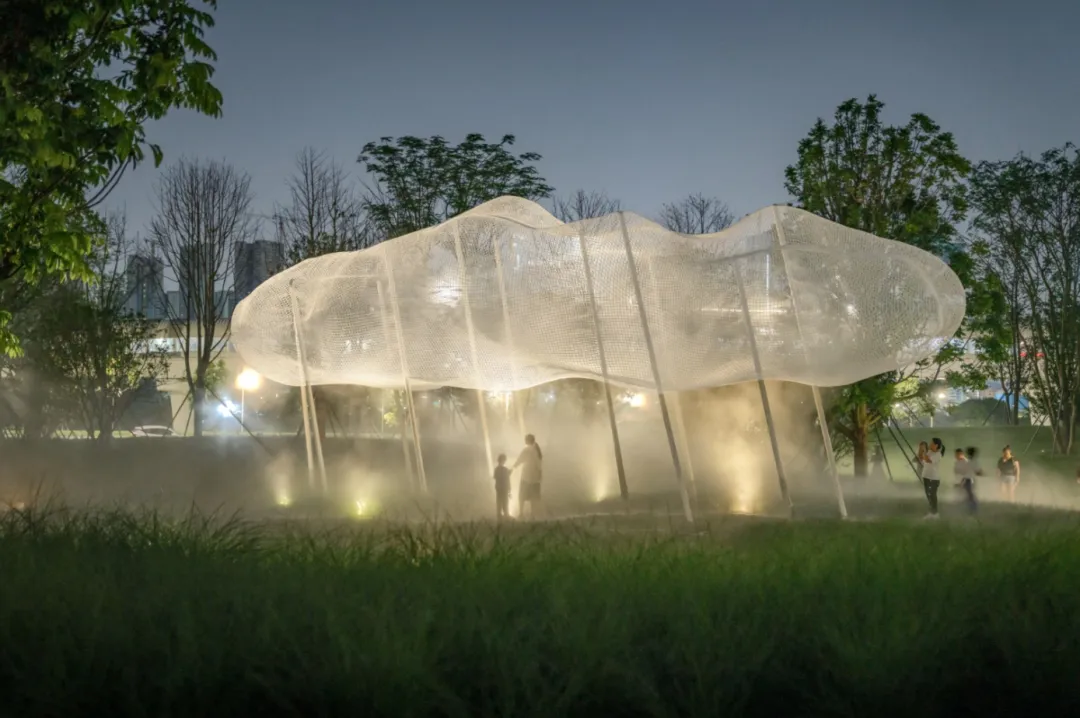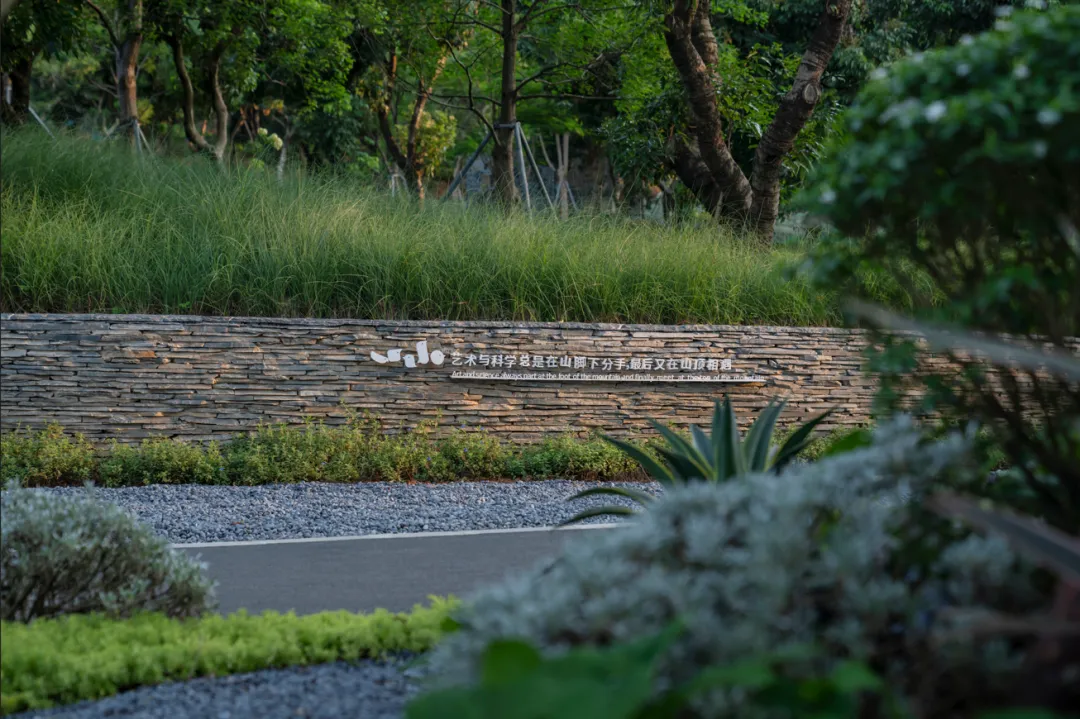| Developer Bureau of Public Works of Shenzhen Municipality | Landscape Design Guangzhou S.P.I Design Co., Ltd, Surbana Jurong | Project Location Shenzhen, Guangdong Province, China | Design Time 2020 |
Shenzhen Guangming Science Park
The Guangming Science Park is located in the heart of Guangming District, Shenzhen, covering an area of 208.25 hectares. It was envisioned as a world-class destination integrating ecological, cultural, aesthetic, and recreational functions. It takes a “One Core, Two Wings” layout—the “Core” refers to the scientific hub that outlines the city image; and“Wings” refer to the Northern Wing for ecological and wild-nature activities and the Southern Wing for meeting citizens' recreational needs.
Restructure the Ecological Base
Biodiversity assessment: A comprehensive field study on biodiversity was conducted across the site which appeared a mixture pattern of forest, meadow, shrub, river, wetland, and farmland.
Restoring migratory bird sanctuaries: Located along the critical East Asia–Australasian Flyway, the park regenerates essential stopover habitats for key species like the Egretta garzetta and Larus saundersi. Through an species-specific analysis of feeding/nesting behaviors and low-intervened topographical creation, water level design, and plant community construction, the design established ten distinct terrestrial and wetland habitats for bird, amphibian, fish, and insect.
Low-carbon planting design: The park preserved existing healthy native trees and lychee orchards while introducing native species with high carbon sequestration capacity, achieving its sustainable development in a low-cost, low-maintenance, low-consumption, and low-carbon way.
Eco-corridor construction: To reconnect ecosystems interrupted by metro lines and arterial roads, a 50-meter-wide wildlife crossing was strategically positioned between the Core and the Northern Wing. Native vegetation including nectar plants and berry plants were used to attract bees, butterflies, and other insects and mimic natural environments for animal migration and foraging.
Highlight the Scientific Theme
In-depth investigation: The design team conducted in-depth investigations such as field survey, online and offline interview, etc. to learn the aspirations of both scientists and local residents. They also analyzed the historical evolution of scientific disciplines, translating these findings into landscape design that creates interactive, educative, and aesthetically engaging public spaces.
Three Science Trails: Highlighting the District’s three core scientific disciplines—Materials Science, Life Science, and Information Science—the design integrates three Science Trails featuring interpretive signage that blends education with recreation. Furthermore, the planting design also emphasized the scientific themes.
Six Nature Theaters: The design drew inspiration from natural elements of water, timber, mist, sound, topography, and the moon to create six themed Nature Theaters. The Water Power Theater employed meandering wetlands to demonstrate water purification processes. The Mist Forest Theater features foot-activated fog systems simulating ethereal forest atmospheres. The Sound Wave Theater transforms high-speed rail vibrations into visualized ripple patterns through interactive wave generators.
Currently, the park's forest canopy coverage has increased from 52.1% to 83.9%, leading to a significant improvement of air quality and microclimatic condition. The number of birds and insects observed in the park has risen substantially. It also provides a dynamic outdoor classroom for children educational programs.
